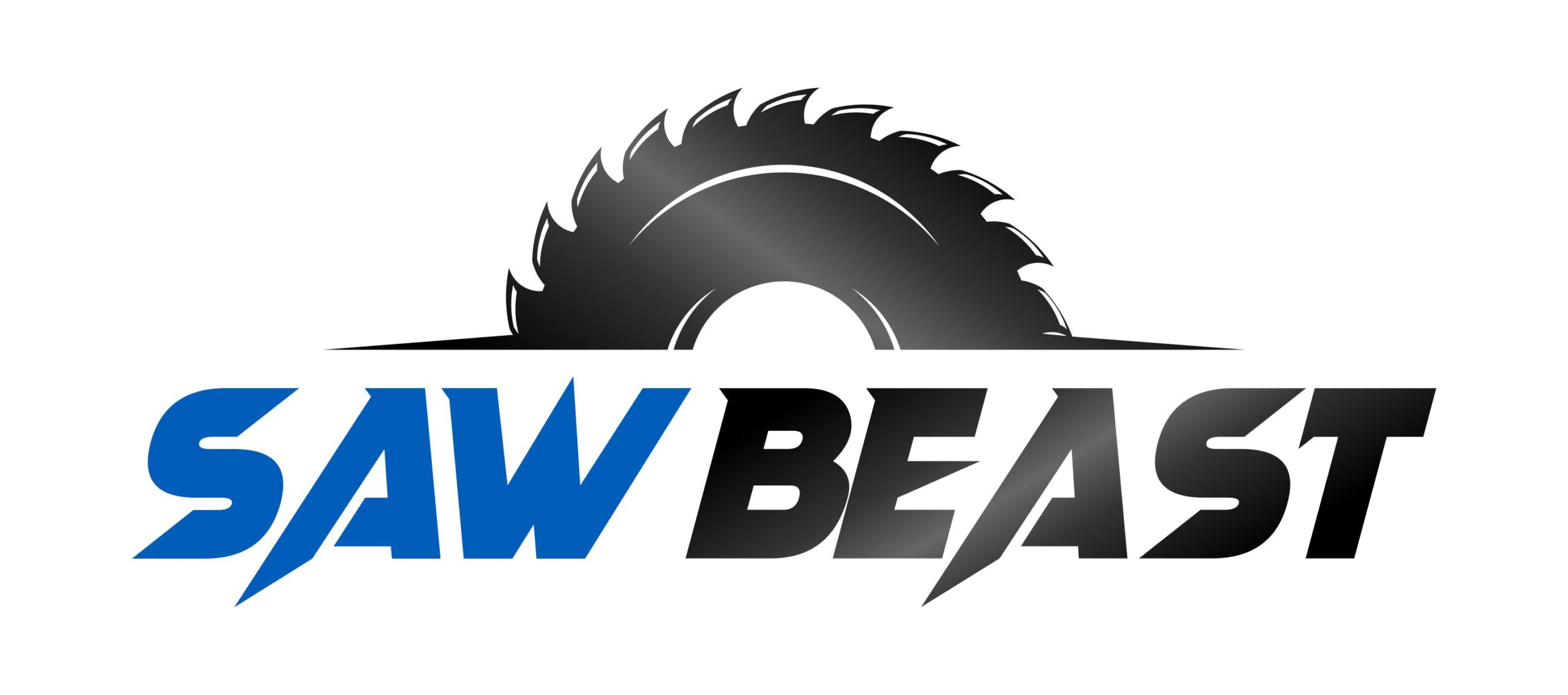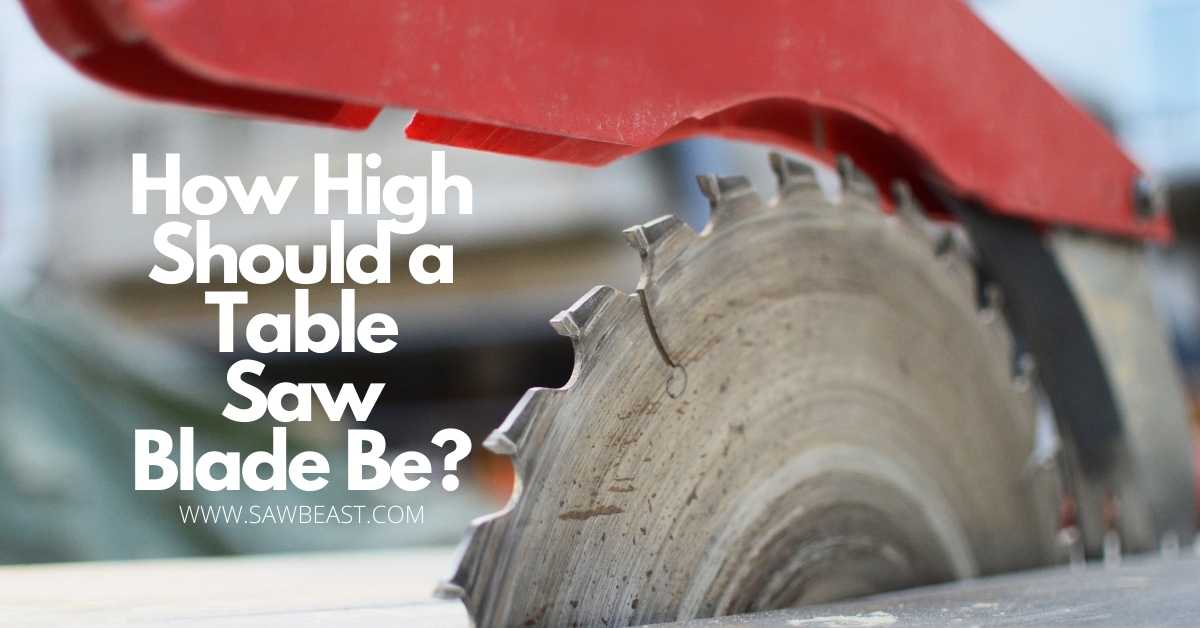Woodworkers have debated over the perfect height of a table saw blade for a long time. However, even to this date, they have not been able to reach a consensus on the ideal height of a table saw blade.
Several factors affect the height of the table saw blade, and one needs to consider them before setting the saw blade in its position.
How High Should A Table Saw Blade Be?
We have listed four ideal blade positions one can follow:
- Set the blade at such a position that it rises between 1/8″ to 3/8″ above your workpiece.
- Set the blade at such a position that it rises between 1/4″ to 1″ above your workpiece.
- Set the saw blade at such a position that a complete tooth raises above your workpiece.
- Set the saw blade at a position where half of the gullet on the blade rises above the workpiece. Gullet is a space in front of each tooth.
The ideal height of your table saw blade is where it produces safe and precise cuts. If you want, you can experiment with the recommendations listed above. However, you must ensure you follow all the safety measures to avoid potential injuries while using the table saw.
Recommendations From The Manufacturers
Freud Industrial has suggested that it is ideal to have around 3 to 5 teeth cutting through the wood when ripping. On the other hand, you should have 5 to 7 teeth working through the wood when making crosscuts.
In short, the best position for placing your blade is ‘just above’ your workpiece. Setting blade raised 1/8″ above the workpiece makes it ideal.
Various Aspects Affect the Height of the Blade.
We have mentioned some of the factors below to help you decide the ideal height of your table saw blade.
1. Kickback
Kickback is a dangerous event that woodworkers often experience. It is an unfortunate situation where wood gets picked up by the teeth of the blade and gets thrown back at you.
If the wood hits you, it can severely injure you and leave you in shock. In worse cases, kickbacks can lead to fingers or hand amputation. Hence, it is essential to determine the ideal height of your table saw blade to avoid kickbacks.
If you set the table saw blade at a low height, it will have a lower angle of incidence. The angle of incidence indicates how the blade approaches the wood during a cut.
A low angle of incidence directs the blade’s force towards the person operating the table saw, which can result in a kickback where a piece of wood gets thrown back at you.
If you set the blade higher, it will have a higher angle of incidence. In this scenario, force directs toward the table’s surface, which might not throw a piece of wood back at you, but it might propel shrapnel back at your face or eyes. This unfortunate situation can only be avoided by following preventive measures.
Moreover, when a saw kerf gets pinched, it also leads to kickbacks. Therefore, it is ideal to have the blade set at a lower height as this decreases the kerf’s length and, hence, the chances of a kickback.
2. Heat
When you set a low blade height, more teeth stay in contact with the wood during a cut. The connection between the teeth of the blade and the wood generates heat during each cut.
When more teeth are in contact with the piece of wood, they generate more heat. You might experience burned edges over prolonged use.
On the other hand, if the blade is set at a higher position, fewer teeth contact the wood, which results in a faster and more relaxed cut than setting your blade at a lower height.
3. Debris Clearance and Friction
The gullets need to clear themselves before chewing the piece of wood again. Gullets must dump the excess material whenever the blade takes a wood bite. If the extra material is not removed, the friction on every pass increases and eventually burns the edges of the wood piece.
Gullets usually get cleared with each rotation because the cutting is done from the front of the blade. And the sawdust is accumulated on downstrokes. The air clears the sawdust after every bite. However, having one complete tooth raised above the workpiece is ideal for better debris clearance.
4. Tear Out
When the saw kerf exits through the material, it causes chipping or tearing of the cutting material. The height of the blade can affect the tear-out of the material. Woodworkers have noticed that if the blade is set at a lower position, it results in less tear-out. On the other hand, if you set the blade higher, it results in more tear-out.
Safety Measures To Follow While Working In The Workshop
Before starting a new project, it is best to follow all the safety measures to avoid injuries. Don’t forget to wear protective glasses and headphones, and never use your table saw barehanded.
Properly clean your table saw before starting any project. It is essential to wipe off all the dust, so it does not propel back at you while working. It is ideal to purchase a table saw with a riving knife to avoid kickbacks.
Splitters do the same job of providing safety from kickbacks. Use either of them to reduce the chances of a kickback. Also, never remove your blade guard. It might affect the accuracy of your cuts; however, it is an essential element of the table saw that protects you from injuries.
Lastly, get a push stick / push block to feed pieces of wood to the table saw; it keeps your hand away from the blade, preventing injuries and kickbacks.
Conclusion
We recommend you keep your blade just above your workpiece, with its peak 1/8″ inches above the material. This height is ideal because it is safe. You would not risk losing your finger while working with a blade at this height. Looking for the safest options that produce efficient results is always the better.

